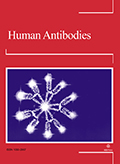Authors: Gebru, Addis Adera | Birhanu, Tadesse | Wendimu, Eshetu | Ayalew, Agumas Fentahun | Mulat, Selamawit | Abasimel, Hussen Zakir | Kazemi, Ali | Tadesse, Bosenu Abera | Gebru, Beniam Adera | Deriba, Berhanu Senbeta | Zeleke, Nigus Shimelis | Girma, Abebe Gule | Munkhbat, Bulgantsetseg | Yusuf, Qamar Kassim | Luke, Amana Ogeto | Hailu, Dejene
Article Type:
Research Article
Abstract:
BACKGROUND: The novel Coronavirus Disease 2019 (COVID-19) is the major public health burden in the world. The morbidity and mortality of the global community due to this disease is dramatically increasing from time to time. OBJECTIVE: This situational analysis is aimed to analyse prevalence and incidence of COVID-19 and to provide clear information about this disease for the scientific community, stakeholders, healthcare practitioners and decision-makers. METHODS: The literatures were identified by searching the key relevant and officially known online databases: medRxiv, Google scholar and PubMed. The online databases contain archives of most English
…biomedical journals and scientific papers published online from 31 December to 3 April 2020 were included. After the literature search, articles were screened independently by two reviewers for eligibility. RESULTS: The world continents have confirmed a total of 1,202,320 confirmed COVID-19 cases: (51.2%) in Europe, (27.7%) in North America, (17.9%) in Asia, (1.96%) in South America and at less number of confirmed COVID-19 cases in Africa and Australia which was accounted 0.8% and 0.5%, respectively. However, this review showed that there was a significant increase in the confirmed COVID-19 cases by 109,555 in Asia, 8,658 in Africa, 332,866 in North America, 20,269 in South America, 568,894 in Europe, 5,051 in Australia and 1,045,403 in the whole world, with the exception of Antartica, during the review period. The overall results showed that there were 1,098,762 cases and 59,172 deaths recorded during the review period. The result zero number of deaths with COVID-19 was observed in 66 countries. CONCLUSION: The review concluded that COVID-19; SARS-CoV-2 is the major public health burden in the world, the morbidity and mortality of global community is dramatically increasing from time to time. Strong collaboration among all sectors and the design of effective prevention and control strategies which include staying home, social/physical distancing, quarantine, testing of suspected patients, isolation and managing of the confirmed cases. Therefore, all countries should implement five major COVID-19 prevention and control programmes as soon as possible at community level.
Show more
Keywords: COVID-19, confirmed cases, deaths, prevention and control, review
DOI: 10.3233/HAB-200420
Citation: Human Antibodies,
vol. 29, no. 2, pp. 139-148, 2021





